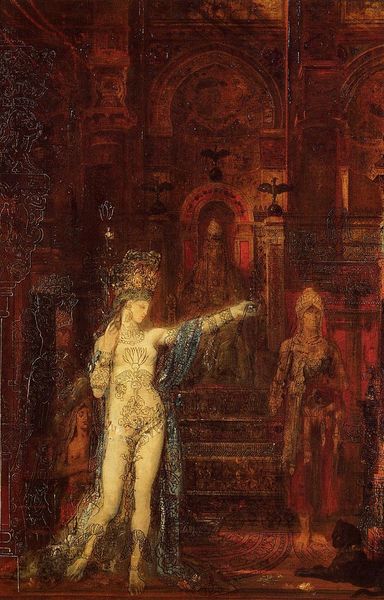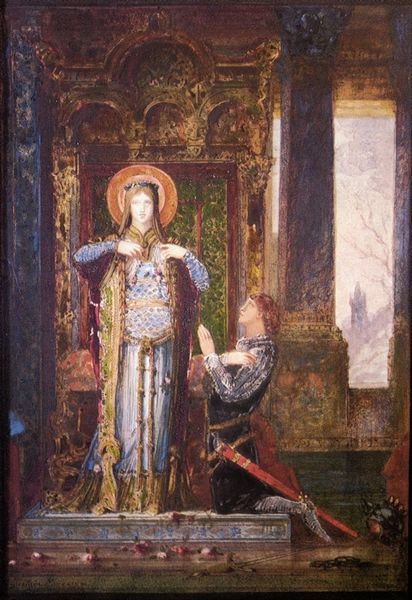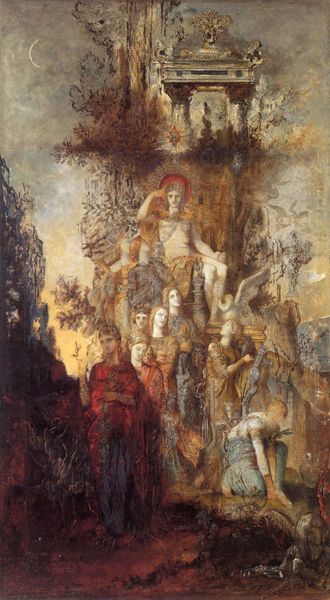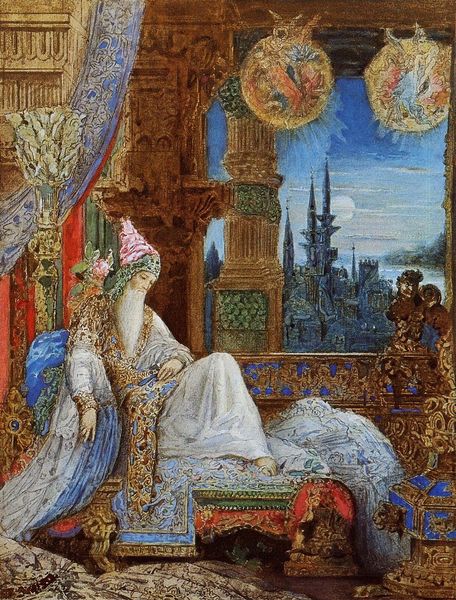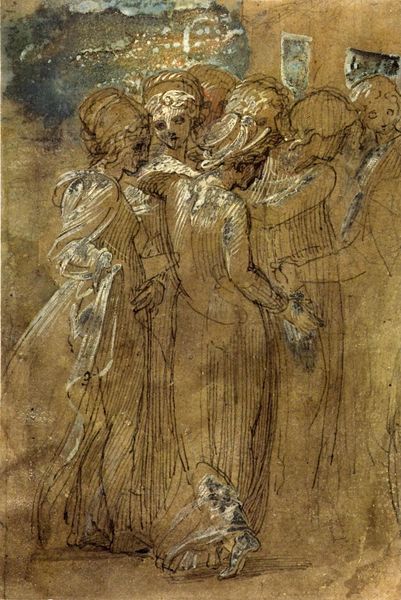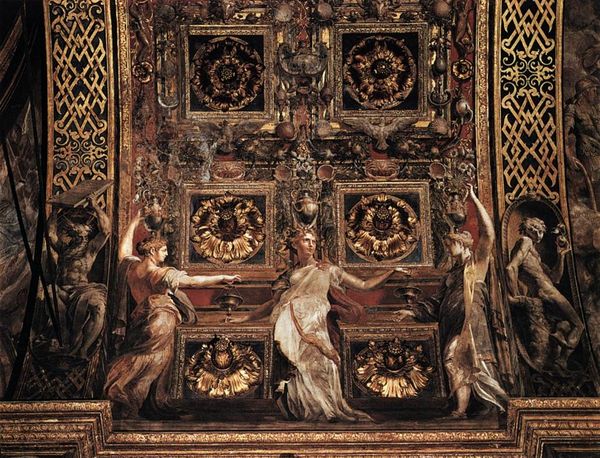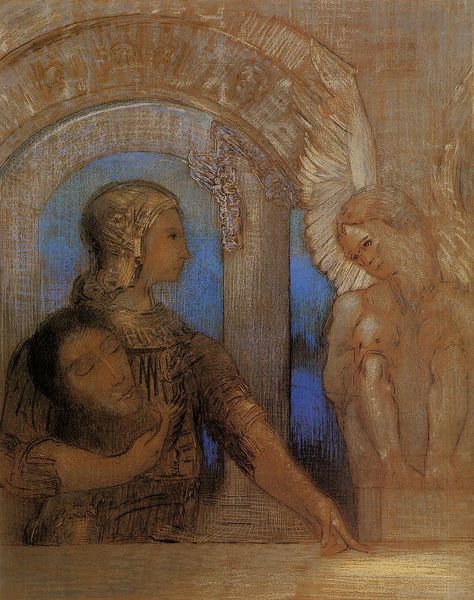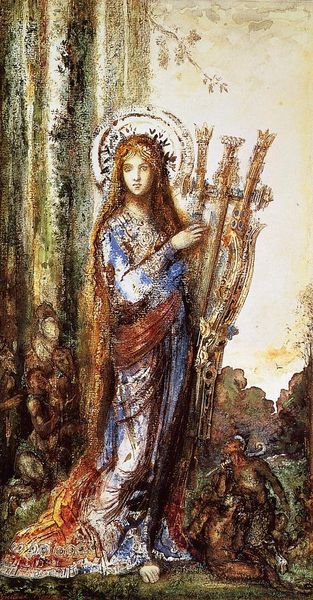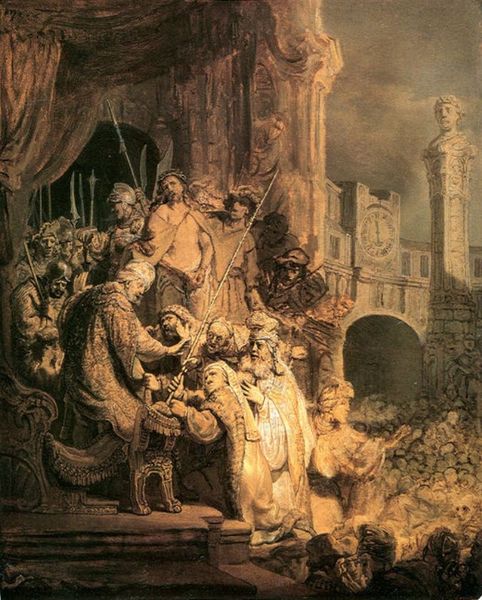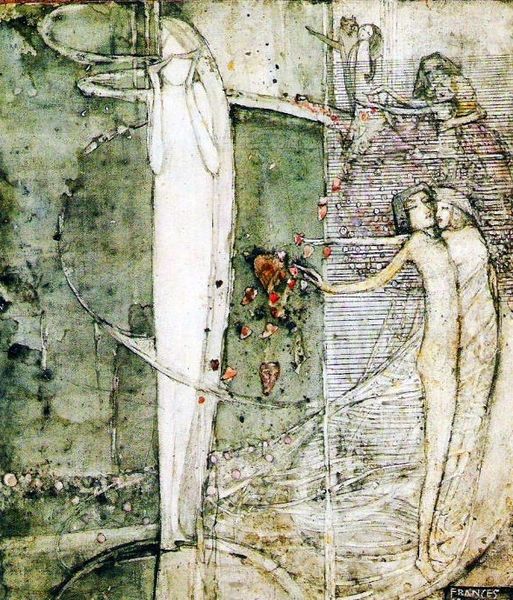
Copyright: Public domain
Curator: The density of this painting is almost overwhelming; the eye struggles to find a single clear focal point. Editor: I agree. There's a real sense of foreboding in Moreau's "Salome Dancing," painted in 1886 using oil on canvas. The piece presents us with this famous biblical scene of desire and consequence, but its atmosphere is what first grabs me. It is laden with hidden meaning, wouldn't you agree? Curator: Undoubtedly. I’m immediately drawn to the almost obsessive application of paint. The entire surface vibrates with texture. Forms seem to emerge organically from the ground, as if conjured into being by the very act of painting itself. This density complicates any clear reading; a web of visual information confronts us. Editor: The iconography is striking. Salome is positioned between the sacred and profane, marked by a statue of what appears to be a priest or king, yet she dances with abandon, adorned with the jewelry and clothing of an object of sexual desire and deadly beauty. Her dance becomes symbolic of something so much darker. Curator: Look closely at the structure Moreau employs. The symmetry, though present, is disturbed; forms dissolve and reappear. One gets the sense the painting functions more like a stage set, or perhaps even a reliquary, housing an interior drama. See how the archways serve to flatten pictorial space. Editor: And the light, as well, enhances the ominous narrative. It casts a pall over everything but Salome herself. Moreau uses visual symbols, referencing ritual and decadence, echoing stories and ideas from ages past. The work evokes ancient history as much as it seems to depict it. Curator: What stays with me is the visual assault—the relentless application of pigment, almost as if Moreau intended to exhaust the viewer, mirroring, perhaps, the exhaustion of a culture drowning in its own spectacle. The architecture seems unstable and fragmented. Editor: For me, Moreau's Salome stands as an exploration of forbidden desires. It encapsulates the cultural anxieties and societal power imbalances of his time. It continues to invite reflection on the dynamics between power, desire, and the cultural roles projected onto women.
Comments
No comments
Be the first to comment and join the conversation on the ultimate creative platform.
